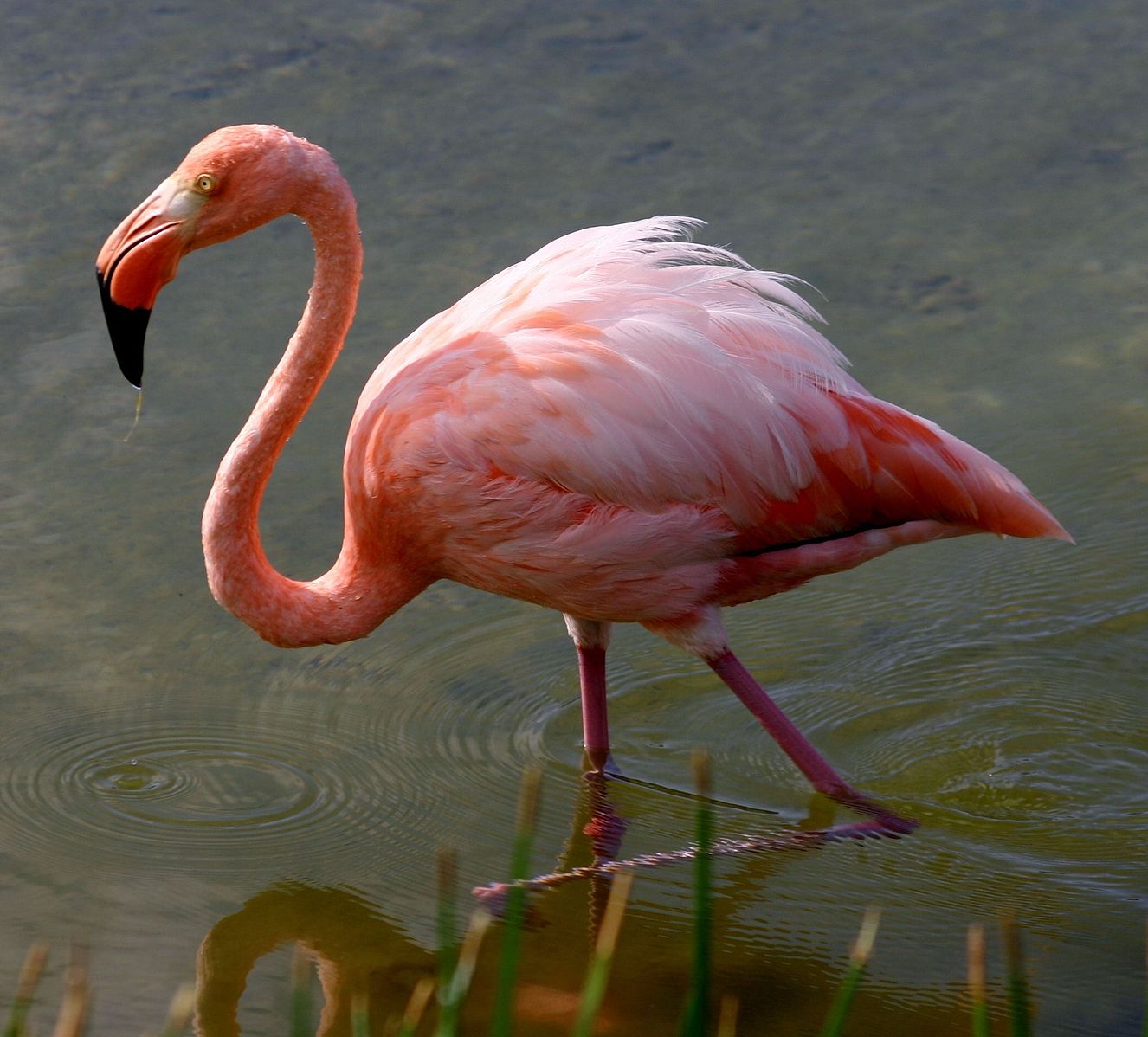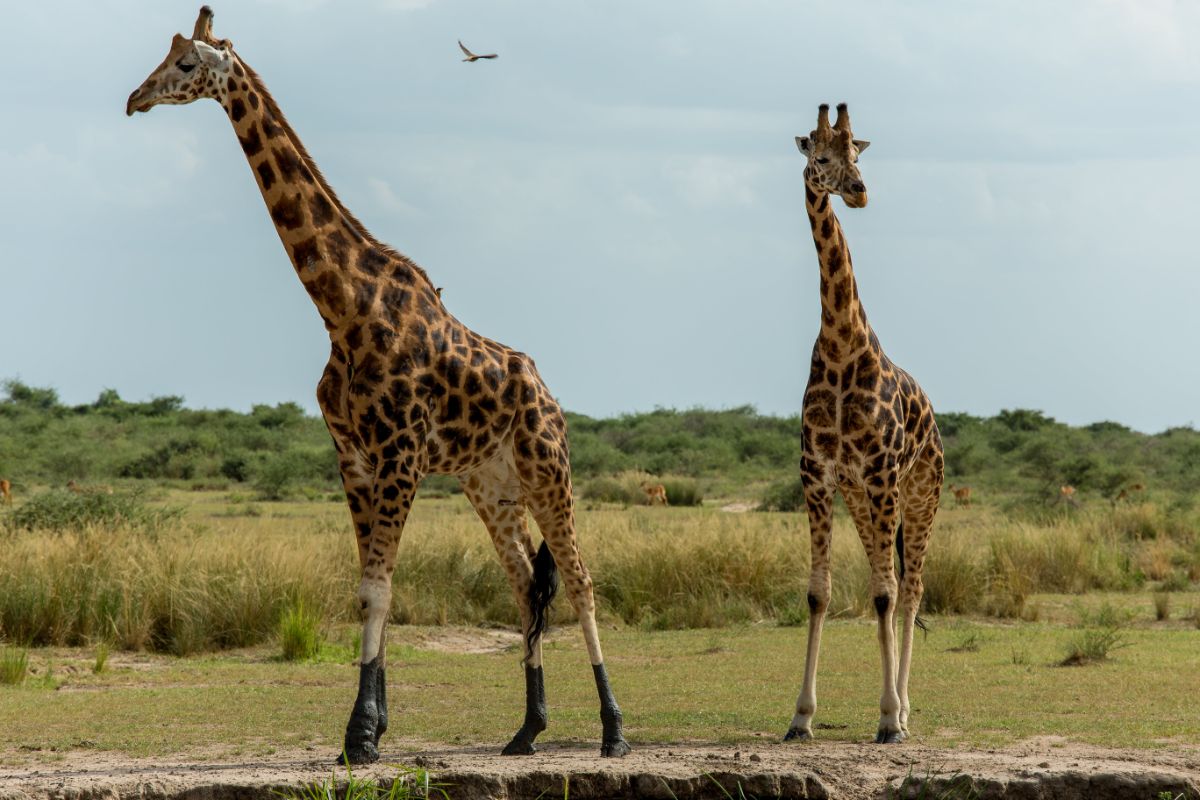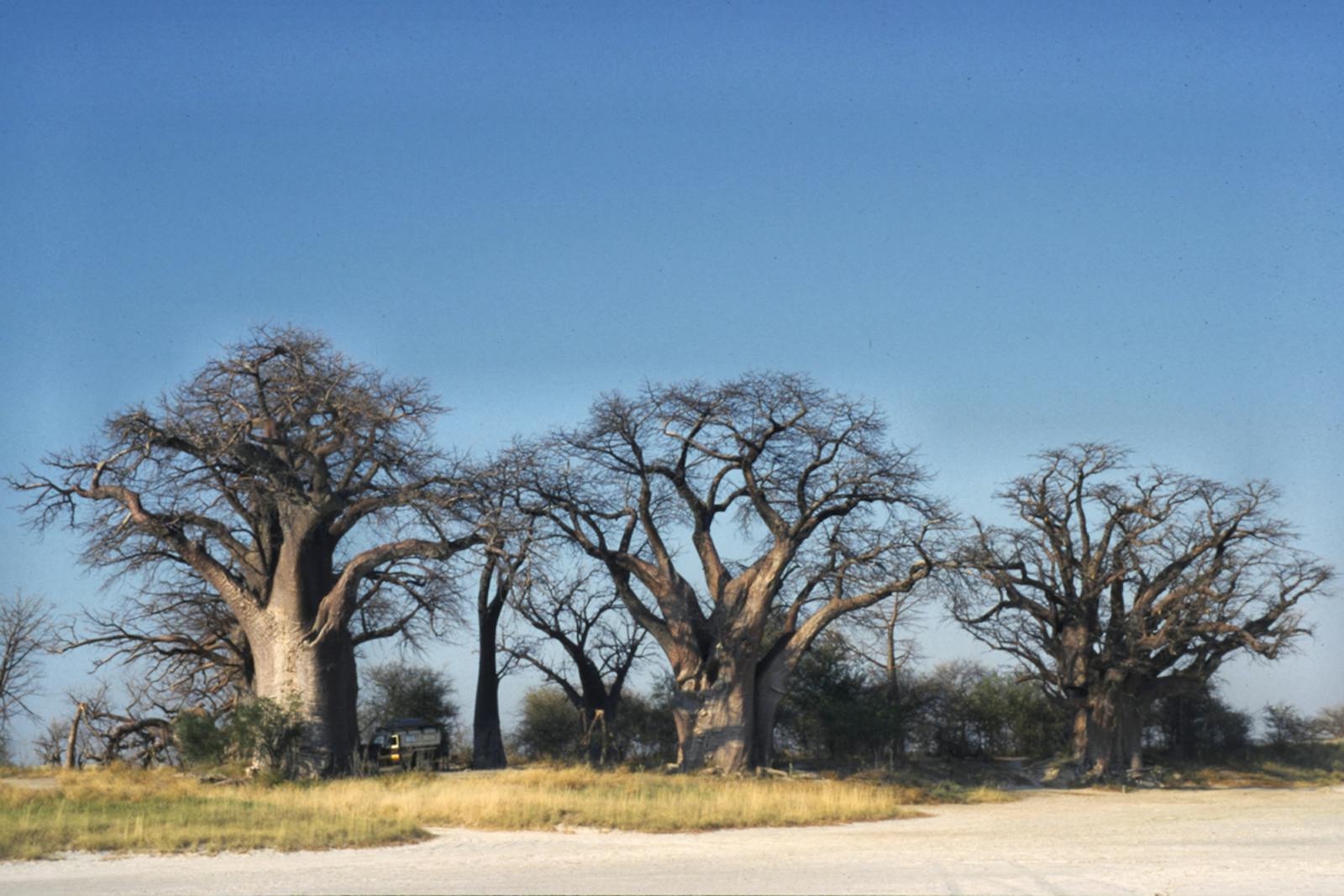Makgadikgadi Halophytics
The ecoregion’s land area is provided in units of 1,000 hectares. The conservation target is the Global Safety Net (GSN1) area for the given ecoregion. The protection level indicates the percentage of the GSN goal that is currently protected on a scale of 0-10. N/A means data is not available at this time.
Bioregion: Greater African Subequatorial Savannas & Mixed Woodlands (AT11)
Realm: Afrotropics
Ecoregion Size (1000 ha):
1,768
Ecoregion ID:
73
Conservation Target:
94%
Protection Level:
2
States: Botswana
The Makgadikgadi Pans are the salty remnants that occupy the center of a depression that once held an enormous lake spanning most of northern Botswana. It is one of the largest pans in the world covering over 12,000 km2. Today, the region is a vast expanse of salt-saturated clay which receives freshwater from the Boteti and Nata Rivers. Sua Pan is the most important breeding area in Africa for the greater flamingo and supports the largest number of breeding lesser flamingo in southern Africa.

The flagship species of the Makgadikgadi Halophytics ecoregion is the greater flamingo. Image credit: Creative Commons
The ecoregion covers the Makgadikgadi Pan complex in northeastern Botswana which contains two major pans, Ntwetwe Pan and Sua Pan, surrounded by a number of smaller pans. The ecoregion is situated within the Kalahari—a flat, semi-desert plain where the climate is semi-arid, with droughts occurring in approximately seven-year cycles.
The average rainfall is 450 to 500 mm per annum with most rain falling as thunderstorms during the summer months from October to March and little falling during the winter (May to August). Summer temperatures average around 35°C and reach a maximum of 44°C. The formation of various geological faults diverted the flow of the Zambezi, Okavango, and Chobe rivers away from the basin, causing the lake to slowly dry up leaving flat, soda-saturated clay pans.
The solonetz soils of the pans are almost devoid of macrophytic vegetation. The dominant plant life is a thin layer of blue-green algae, which covers surfaces during the rainy season. Salt marshes are found around the wetter fringes of the pans.
-CC-2012.JPG)
Hartebeest. Image credit: Creative Commons
The harsh climate of the Makgadikgadi Pans is unsuitable for most animals. Only highly specialized invertebrates permanently inhabit the pans. Animals confined to the grasslands surrounding the pans include hartebeest, springbok, greater kudu, giraffe, blue wildebeest, spotted hyena, lion, cheetah, and elephant along the Boteti River. The Nxai Pan has a large springbok population and is one of the few places where springbok and impala cohabit.
For most of the year the pans are devoid of birds, except for ostriches—which nest on the pans for protection from scavengers including the black-backed jackal—and bird species such as the chestnut-banded and Kittlitz’s plovers. The grasslands surrounding the pans support important populations of kori bustard as well as secretary bird, Burchell’s and yellow-throated sandgrouse, among others.
After good rains the pans attract thousands of waterbirds, most of which come to breed. The most spectacular concentrations are of the greater and lesser flamingos, which flock in many thousands. The pans are also a key breeding area for the lappet-faced vulture who preys on the flamingos and great white pelicans.
The ecoregion is relatively undisturbed, human populations are very low, and large blocks of habitat remain intact. The Makgadikgadi and Nxai Pan National Park cover approximately 7,478 km2 of this ecoregion. While this park is extensive, it does not include Sua Pan, although the Nata community have established their own informal protected area, the Nata bird Sanctuary, which includes the northern area of Sua Pan and the Nata Delta. Additionally, part of the ecoregion is protected by the Okavango Delta Ramsar site.
The major threat to wildlife throughout Botswana has been the erection of veterinary disease cordon fences which separates saline pans from the adjacent saline grasslands. Wildebeest and hartebeest move northeast towards the Central Kalahari Game Reserve during the dry season. Here they encounter the veterinary fences and are channeled into the Lake Xau and Boteti River areas causing major overgrazing and competition with local wildlife.

Giraffes. Image credit: Justin Raycraft, Creative Commons
A veterinary fence also protrudes into the eastern area of Sua Pan which impacts the flamingo population, as significant numbers of adults die every year because of collisions with the fence wires. These barriers to wildlife movements have increased since the policy to allocate fenced ranches was introduced. Uncontrolled tourism, particularly motorbike tours, is another major threat to the fauna of the Makgadikgadi Pans.
A soda ash extraction plant is situated at the northeastern edge of Sua Pan, which has lowered the water table, and there are plans to extend this southward into the rest of the pan. Another threat is the potential diversion of water for irrigation schemes elsewhere in the region and the damming of the Mosetse River which would result in the pans drying up and the loss of breeding grounds for water birds, for example, flamingos and pelicans.
The priority conservation actions for the next decade will be to: 1) enhance water use efficiency and water availability, for example through rainwater harvesting and re-use of greywater; 2) maintain migratory routes for wildlife between pans and adjacent ecosystems through removal of redundant fences and increasing the protected area network; and 3) implement environmental flow monitoring on the rivers entering the pan system.
Citations
1. Burgess, N., Hales, J.A, Underwood, E., Dinerstein, E., Olson, D., Itoua,I., Schipper, J., Ricketts, T. and Newman, K. 2004. Terrestrial Ecoregions of Africa and Madagascar: A conservation assessment. Washington DC, USA: Island Press.
2. Department of Environmental Affairs. 2015. Fifth National Report to the Convention on Biological Diversity. Gaborone, Botswana: Department of Environmental Affairs.
3. Department of Environmental Affairs and Centre for Applied Research. 2010. The Makgadikgadi Framework Management Plan. Gaborone, Botswana: Government of Botswana.
4. Hancock, P. and Weiersbye, I. 2015. Birds of Botswana. Princeton University Press.




